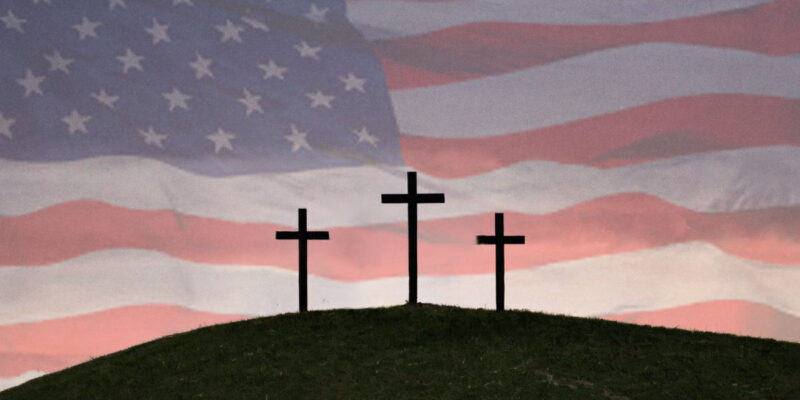Juneteenth has only been a federal holiday since 2021. That recognition has caused some of our black brothers and sisters to try to include more races in their celebrations of it:
‘Historically, Black churches and segregated parks served as meeting places for Juneteenth festivities, which included soul food, dances, clothing, and praise and worship. While it was not universally recognized by Black Americans, Juneteenth events were largely held in Black spaces and reflective of Black cultures.
‘But with the adoption of the federal holiday, interest in celebrating Juneteenth has expanded and diversified. Many longtime observers of the holiday have encouraged that development. For them, Juneteenth is a recognition of American history that should be open to all people.
‘“We’ve always tried to make it an inclusive event and try to bring awareness to those people who are not people of color,” Jackman said. “We’ve said it wasn’t just all Black people, but there were white folks that were an important part of our history”’ (Aallyah Wright, ‘Despite Corporate Pullback, Black Americans Keep Juneteenth Traditions Alive,’ capitalbnews.org).
For others, however, these days and months of Afro-centric celebrations are simply another way to keep alive the animosities between the descendants of Africans and Europeans in the United States. For example (written during the opening days of Black History Month 2022):
‘Today, far too many people argue that America’s original sin of trafficking and enslaving human beings does not matter, that all this is in the past and we have an even playing field now. They argue that as a nation we have “done enough.” They say it is time to end programs aimed at redress and stop talking about racism once and for all.
‘I would ask those people to at least recognize the reality of America’s long history of slavery and how its effects came to be a part of the American fabric. I would ask them to stop denying the continuing effects of slavery and its detrimental impact on generations of Americans.
‘It is difficult for me to comprehend how anyone cannot see the vestiges of slavery and Jim Crow in the ongoing inequity in education in the United States. Most students who attend public schools (which is what the vast majority of U.S. students do), go to the school in their neighborhood. In cases where—because of discriminatory housing policies and practices—Black families with lower incomes are concentrated in neighborhoods, the schools in those neighborhoods tend to be underfunded and underperforming. Worse yet, in some areas, individual schools are punished with lower funding when they fail to perform so that failing schools only get worse with no opportunity to improve and better serve students’ (Raymond Pierce, ‘What Is Gained By Denying America’s Original Sin?,’ forbes.com).
Gerrymandered majority-minority congressional districts in States like Alabama, Louisiana, and South Carolina, which have made headlines in recent years, also tend to generate racial tension and division rather than reconciliation.
Will we ever be able to get beyond the legacy of slavery in the US?
It seems doubtful at times, yet it is possible if we choose our future path wisely.
When it comes to slavery in the States, there are generally two groups whose views are not very compatible. One group says that it was a horror akin to the Soviet gulag or the Nazi concentration camps. The other argues that it was simply an accepted institution in the world at that time; therefore, little consternation should arise over it. Quite obviously, a dialogue between these groups isn’t going to be very fruitful.
If there is going to be reconciliation in the States over slavery, something that transcends these two positions will be necessary. And it does exist. For those who are genuinely interested in finding it, it is here, in the lives of two saints, a master and his slave, who were martyred together during the Roman persecution of the Church, celebrated by Orthodox Christians on 22 June:
‘Zenon was a Roman officer during the reign of Emperor Maximian (286-305) in the Arabian town of Philadelphia (now Amman in Jordan) and Zenas was his servant. Being a pious and zealous Christian, Zenon desired to be martyred for Christ. For this reason he distributed all of his belongings to the poor and liberated all of his servants. When Zenon heard that the governor Maximos loved the idols very much, he presented himself before him, followed by his servant Zenas. Zenas was a prudent and good-intentioned servant, and he did not want to be separated from his master Zenon.
‘Standing before the governor, Zenon rebuked him, because he was occupying himself with the vain worship of lifeless idols. For this the governor ordered that he immediately be flogged. After the Saint had been flogged, he kicked at the sacrificial altar, and it fell. For this the Saint was suspended and mercilessly flogged. Then salt and vinegar were rubbed into his wounds. After this torture, Zenon was cast into prison and his legs were put in stocks that were tightened to the fourth peg.
‘During this time Zenas visited his master Zenon and begged him that he not allow him to go away as he did with his other servants. When the governor learned of this, he ordered that Zenas be imprisoned together with his master. And when both together were brought before the governor and questioned, they both refused to deny Christ, for which they were harshly flogged.
‘Separately Saint Zenon was burned on his chest and heart with burning spits. Then they were both suspended from their armpits, while a heavy rock was tied to their legs. After this they were cast into a pit of fire, and the flame of the fire was doused with oil by the pagans. Because in an unusual manner they were kept unharmed by the grace of God, they were beheaded, and in this way the blessed ones received the crown of martyrdom’ (‘Holy Martyrs Zenon and Zenas of Philadelphia,’ johnsanidopoulos.com).
Now then, what was it that caused St Zenon to grant his slaves their freedom, though he was under no compulsion to do so, and without being offered any remuneration for this action? And what was it that caused St Zenas to desire to remain at the side of his former master without any rancor, without any demands for reparations, for justice, etc., even in the face of unspeakable torture?
That ‘something’ is none other than Christian love.
There are numerous examples of this kind of mutual love between whites and blacks at the South, both before, during, and after the War. My own family provides an example. One of my pairs of grandparents had a black mammie who worked for them in their home for many years, and the mutual goodwill and respect between them was such that our families remain close to this day. It is only as we in the States have become hardened in viewpoints and ideologies increasingly divorced from Christianity that Africans and Europeans have become estranged from one another.
The Holy Apostle Paul gives some confirmation to this, writing to the Ephesians that Christ ‘broke down the barrier of the dividing wall’ (2:14) between God and sinful man. The more intimately united we are to the Lord, the more we also will have a share in His ministry of reconciliation (II Corinthians 5:19-20; Colossians 1:20) between God and man, and between the tribes of men.
And a recent Holy Father of the Church, Elder Vitaly of Tbilisi, Georgia, who fell asleep in the Lord in 1992, again affirms the wondrous power of love to unite: ‘Once he said to his [spiritual] children, “If you had love, the walls would part, and you would always be with me, you would always see me’ (Earthly Angel, Heavenly Man, trans. Subdeacon Michael Zawistowski, St Herman of Alaska Brotherhood, Platina, Cal., 2019, p. 158).
Blacks and whites in Dixie have been frozen in their cultural cold war for long enough. If the logos, the meaning and purpose of the South given to our people by the Lord at her birth (which He gives to all authentic cultural groups) to accomplish during her lifespan on this earth, is going to blossom into its fulness, we have got to get beyond the contentions over slavery that have divided us for so long. There is only one thing that will enable us to that. The perpetual arguing between the historicists and the social justice warriors will not do it. Only the self-emptying, kenotic love of Christ will allow us to achieve our end together, the kind of love that makes us forget about ourselves for the sake of the good of the other – the kind of love that makes even profound self-sacrifice like the co-martyrdom of Sts Zenas and Zenon possible. We have seen intimations of its kind in days past here at the South; we eagerly await its full flowering.
Bishop Emilianos made an extraordinarily apt statement regarding the obsession with the past mistake of slavery that continues to rankle the States. We hope it will be heeded by all sides of this unfortunately still-heated debate:
‘If we do not leave our past behind and continue to dwell on it—thinking about things that are no longer present and that hold us back—we will never be able to focus on Christ, practice watchfulness, or move forward. Proving this, we have the example of Lot’s wife from the Old Testament. In this story, before God destroyed the city that Lot and his family were in, He told them to leave and not look back. Lot’s wife disobeyed. She looked back as God was destroying the city, and because of her disobedience, she turned into a pillar of salt. We should never look back, not even on our mistakes. We learn and move on’ (‘Real, Ontological, Existential Connection with God,’ orthochristian.com).
Advertisement
Advertisement

